From abandoned factory to “Toxic Playground”
On New Year’s Eve, a derelict steel foundry was taken over by renegade ravers, briefly bringing Berkeley's "post-industrial abyss" back to life.
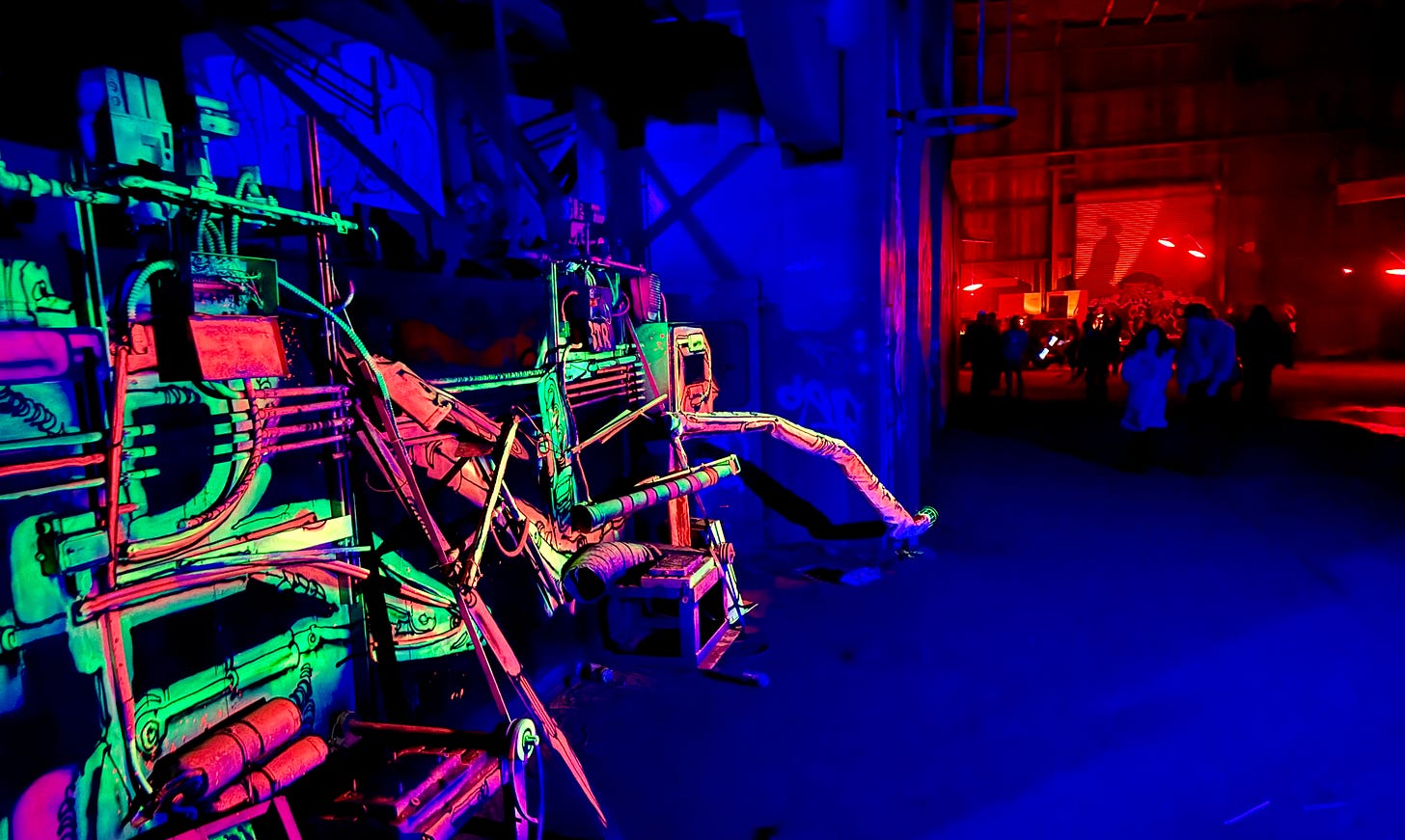
Techno, as the oft-told story goes, was born in Detroit during an era of industrial collapse. Motor City’s main economic engine, auto manufacturing, was being hollowed out by foreign competition, leaving behind a rusty landscape of vast, empty factories. Shop floors where generations of hard-hatted men once assembled the American Dream on wheels were taken over by rats. The first generation of ravers crowbarred their way into this void, carrying bassbins, strobe lights, and crates of vinyl encoded with grooves never heard before. Thumping, mechanical anthems made using cheap drum machines brought a new energy to these decaying structures as thousands of kids packed together to dance until sunlight peeked through the boarded up windows. Echoes of these gatherings are still reverberating around the globe, perhaps louder than ever.
This genesis was on my mind as I walked through a cavern of corrugated metal in West Berkeley a few hours before midnight on New Year’s Eve. The streetlights weren’t working, so the block was dark, but the rumble of bass on the other side of the metal provided a beacon to follow. I ducked through a busted fence, the makeshift entrance, and entered “Toxic Playground,” a collaborative party surreptitiously organized by an amalgamation of DJs, graffiti artists, underground promoters, and soundsystem hackers. About ten different crews had temporarily united to bring raving back to its roots by throwing a renegade party in an abandoned factory.
After getting my wrist stamp, I did a lap to survey the scene. The space was so big and dark that it felt like I was still outside. Glowsticks served as trail markers between various stages, which were spaced hundreds of yards apart. Aerosol fumes wafted across the musty air as muralists sprayed their final flourishes while DJs tweaked endless rows of flashing buttons on controllers spread across tables surrounded by speaker stacks. One stage, set up as a chill pit, was ringed by carpets and couches. Another zone featured elaborately conjoined piles of day-glo detritus, as if it had been decorated by the unholy offspring of Hieronymous Bosch and Lisa Frank. Enormous gantry cranes, once used to haul radiant vats of liquid metal, were repurposed as swings that swooped giggling ravers across the dance floor. Walking between stages was an auditory assault as whiplash beats blasting from half a dozen rigs ricocheted in every direction.
The crowd of gyrating shadows grew denser as the clock ticked closer to twelve, so I decided to get some air by climbing a staircase up and up. Broken glass crunched beneath my feet as I traversed a wet corridor to approach a hole in the wall that looked down onto the party. There was no railing or barrier guarding the dropoff from the floor where I was standing to the ground level far below, so I gripped the frame tightly as I stared out. As the first wave of psilocybin molecules began percolating into my brain, I observed whirlpools of pulsating light pinballing amongst acres of darkness, took a deep breath, and imagined what this site looked like back when it was the third largest steel foundry in the United States.
The Pacific Steel Casting Company was founded in 1934 when Douglas Genger and Ivan Johnson bought a steel foundry that had shuttered earlier in the Great Depression. Business picked up during World War II when the Bay Area became one of the West Coast’s key manufacturing hubs. During this boom, a torrent of federal money powered an unprecedented expansion of local industrial capacity, famously exemplified by enormous shipyards that stretched from Richmond to Alameda and drew hundreds of thousands of migrants from the Jim Crow South and beyond. Smokestacks sprouted like weeds along the waterfront, with the number of factories in West Berkeley alone reaching nearly 200 by 1947.
While many of these heavy industries sputtered out in the post-war years, Pacific Steel Casting (PSC) wisely pivoted from relying on military contracts for ship parts to making specialized components for civilian use. “Over the next eight decades or so, the company would cast 15,000 custom molds, with parts weighing from an ounce to thousands of pounds,” according to an obituary of the company written by Berkeleyside founder Frances Dinkelspiel. “Pacific Steel Casting made manhole covers, parts for AC Transit buses, wheelchair lifts, pipes, valves for sanitary sewers, public water systems, landfill compactors, parts for oil rigs and mining operations, and custom parts for the new eastern span of the Bay Bridge.”
Dinkelspiel’s article mentions that her attempts to contact the descendents of PSC’s founders were stonewalled, but she was able to suss out some details of the company’s “murky” history. Co-founder Ivan Johnson exited PSC in 1955 to become chairman of the newly formed Bay Area Air Quality Management District, an organization ostensibly founded to regulate emissions spewing from sources like Johnson’s former foundry. Following Johnson’s departure, full ownership shifted to Douglas Genger’s family, which maintained control of PSC until the company’s tumultuous final decade, when Genger’s great-granddaughter Katie Delsol, a “semi-reluctant heir” in her thirties, took over. Under Delsol’s brief run as company president, PSC declared bankruptcy in 2014 and was then purchased by Speyside Equity, an investment fund that oversaw the winding down of operations and liquidation of assets.
During the company’s death rattle phase in 2018, KPIX-TV ran a short local news segment eulogizing this “remnant of Berkeley’s booming blue collar industries.” In the video, PSC lab manager David Stevens laments that a lot of people who worked their “whole lives” at the foundry “making a good union wage” have no idea how they’ll sustain themselves moving forward. Citing competition from China for the company’s downfall, the segment contrasts the monolith of impersonal globalized business with the paternal care of the former owners. “If a guy got hurt, say he squished his hand and couldn’t do his old job anymore. They would find him another job,” Stevens said. “You were not gonna get laid off.”
At its peak, PSC had over 600 employees, including immigrants hailing from more than two dozen countries, many with limited English skills or education. Picturing this international workforce coming together in harmony to execute the delicate, dangerous alchemy of transforming molten metal into steel hardware conjures up the “America as a melting pot” metaphor in the most literal sense. You may not be surprised to learn that this nostalgic vision of a benevolent family-owned firm helping ambitious newcomers bootstrap themselves into the middle class is only part of the story
Although PSC had faced numerous lawsuits and protests over air pollution (“Berkeley's odious burnt pot handle smell”) from neighborhood-based environmental groups going back decades, the company’s real problems started with the 2008 economic recession, a slump from which it never fully recovered. Things worsened in 2011 when a Department of Homeland Security audit revealed that more than 200 workers were lacking proper documentation to work legally in the U.S., resulting in mass layoffs and a $401,000 fine. Still reeling from losing a third of its workforce, PSC was then hit by a $31 million class-action lawsuit from 1,300 current and former employees who accused bosses of violating labor laws by withholding mandated breaks. Shortly after settling the lawsuit for $5.4 million in 2014, the company filed for bankruptcy.
After taking over operations, Speyside Equity initially signalled interest in maintaining operations, but after limping along for a few years, the firm decided to cash out. The investment fund fired everyone, auctioned off anything of value, and the land was eventually sold as part of a $48 million deal to transform several adjoining industrial parcels into a 10-acre life sciences campus. When the factory went dark in 2019, investors and executives were first in line to get paid, leaving the 70 remaining employees without severance, a package estimated at a combined total value of $845,746. The union’s pension fund is still scrambling to recover millions in unpaid benefits.
Regarding the site’s redevelopment prospects, decreased investment in life sciences has resulted in nearly 60 percent of Berkeley’s available lab space currently going unleased, including a brand new 540,000-square-foot R&D complex located one mile south of the former PSC site that is totally vacant. Even if economic incentives to build a new life sciences campus improve, the proposal from current property owners Forge Development to rezone the land for this purpose will likely require at least another year before final approval. In the most optimistic scenario, groundbreaking on a new campus would happen in 2027, although it’s possible that delays (legal challenges, financial conditions) could push back redevelopment indefinitely.
In the meantime, the rusting ruins of a steel factory, crowned with a tangle of graffiti-covered ducts, greets thousands of daily travellers driving past Berkeley on I-80. While it awaits a thorough environmental remediation to cleanse decades of industrial seepage, the polluted property, bordered by encampments of the unhoused, sits mostly lifeless, with the exception of copper thieves, vandals, urban explorers, and, on one chilly December night, a few hundred ravers.
The life cycle of companies like Pacific Steel Casting is a familiar one. Ever since the Gold Rush, the same corporate trajectory has repeated itself along the East Bay’s waterfront over and over again. Set up shop; reap enormous profits (often from government contracts and/or subsidies); if rising labor costs or more stringent environmental regulations start hurting the bottom line, close shop and move somewhere cheaper and more lax; leave a toxic mess for someone else (often taxpayers) to clean up. Battery manufacturers, paint factories, chemical plants, and countless other industrial operations have followed the same formula. Absentee owners flee with wealth while flatland neighborhoods get stuck with hazardous eyesores.
After a few minutes of staring at the party raging in the post-industrial abyss below, I stumbled back down into Toxic Playground. I didn’t want to think about economics, social contracts, or the fact that arsenic, chromium, lead, and mercury had been discovered on a nearby lot formerly owned by PSC a few years ago. I didn’t really want to think about anything. I just wanted to dance.
After dodging gaggles of balloon-sucking party kids, I found a sound system that was bumping at an agreeable range of roughly 125 beats per minute and began bobbing along with the rhythm. Midnight, accompanied by the traditional countdown and wooping, came and went unremarkably. As I was getting lost in the music, a familiar sample grabbed my attention. The phrase “six million ways to die – choose one” was looping over a thumping drumbeat. I hadn’t heard this particular remix before, but the sample, a vocal clip from a 1992 Cutty Ranks dancehall track, has been ripped and rerubbed by countless bedroom producers over the past three decades.
Back in high school, one of the first jungle tapes I ever owned featured a bouncy interpolation of the song that wormed its way into my head and never left. While hearing such clichéd samples is yet another reminder that electronic dance music, once futuristic and forward-looking, is now gnawing on its own tail, I was also reassured to hear this familiar expression. As the phrase “six million ways to die – choose one” washed over the crowd repeatedly, I let the words sink in, as I had many times before. The meaning is certainly up for debate, but I take it as a bit of existential advice. All paths ultimately lead to death – it’s your choice how to get there.
Around 2 a.m., I was still on the dancefloor considering the relationship between danger and destiny when I realized there were several flashlights heading straight at me. The authorities had arrived.
Considering the audacious scale of Toxic Playground, I fully expected the party to get busted, so it was actually a relief that the cops and firefighters didn’t arrive even earlier. A mild chaos ensued as zoomers scurried in every direction, but I’d been in this situation enough times to know that the most important priority is moving out the equipment before it gets impounded, stolen, or trashed. I quickly found a friend whose pickup was parked out back and we went to work loading out generators, party lights, and plastic tubs full of cables.
The authorities were more concerned with clearing the venue than making apprehensions, so getting away wasn’t a problem. After a short pit stop to unload the truck in West Oakland, we were back on the road, heading up to a forest to join another rave already in progress. We spent the rest of the night under the redwoods, where the dancefloor was colder, but the air was much cleaner. When I finally made it back home, I looked out my window and saw that the first sunrise of 2025 was glowing bright orange, like someone had splashed molten steel across the horizon.
A few days later, I texted Frances Dinkelspiel, who spent years covering the Pacific Steel Casting saga for Berkeleyside. Frances had toured the site while it was still a functioning foundry, so I wanted her to see what it looked like now, and I attached a few photos from Toxic Playground. She responded, “wow. at least someone is using the space.” Yes, I thought, if only for one crazy night.
In other East Bay Yesterday news…
-I wrote a few articles for SF Gate that were published over the holidays, so in case you missed them, here’s a link to my obituary of Bay Area R&B legend Sugar Pie DeSanto and here’s a piece about the history of the Fox Theater. I’ll also be publishing an episode about the Fox, so be sure to subscribe to the East Bay Yesterday podcast if you want to hear my interview with historian J.M. Marriner.
-My boat tours are on hiatus for the winter, but I’ll be bringing them back as soon as the weather starts warming up. If you want to attend, tickets are now on sale for a Richmond tour on March 1 and Oakland tours on March 15 and 22. For more details about what to expect, check out this FAQ. I’ll be announcing dates for April and May tours in the next newsletter, so check back soon if the March tours are sold out.
Thanks for reading!
Liam





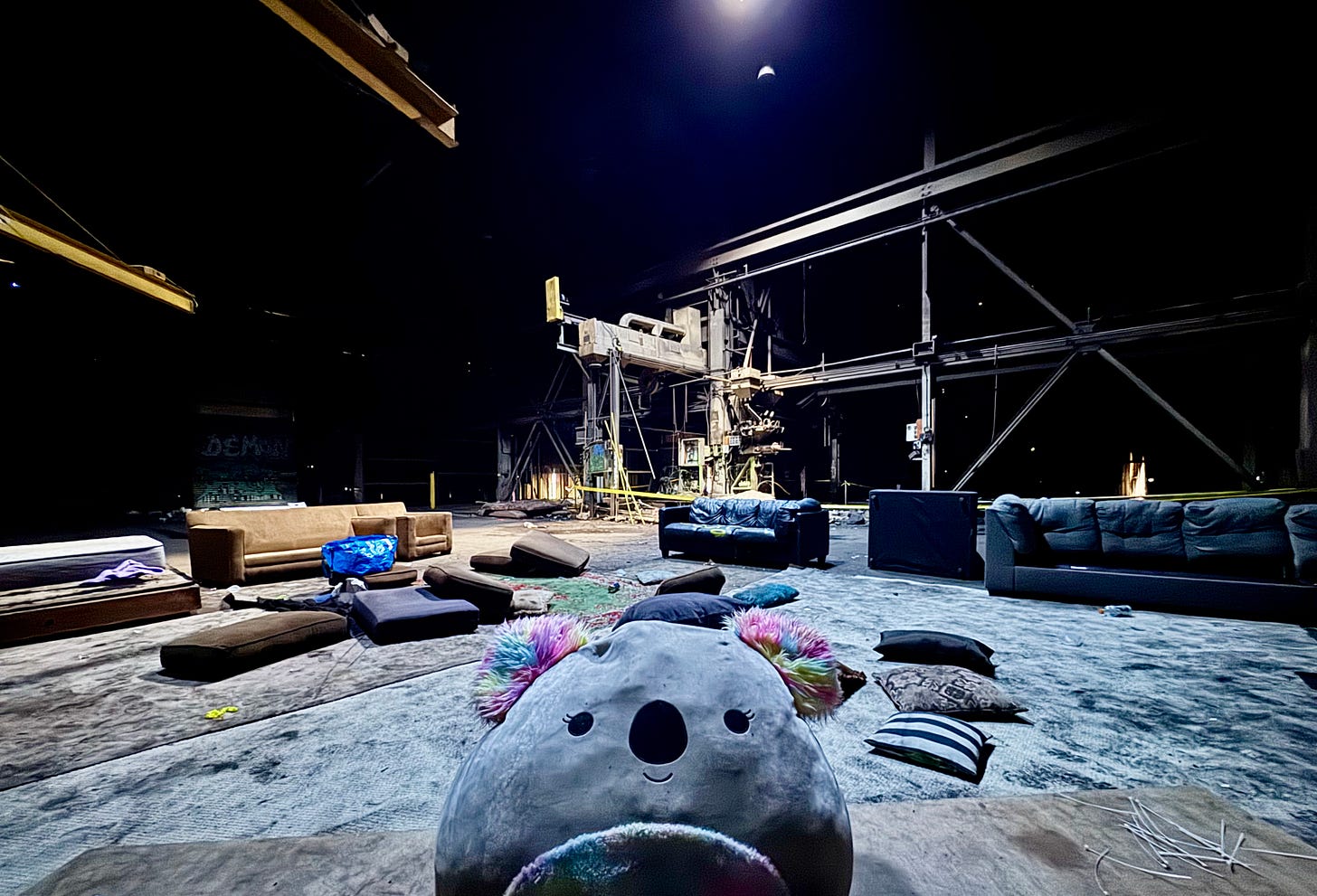
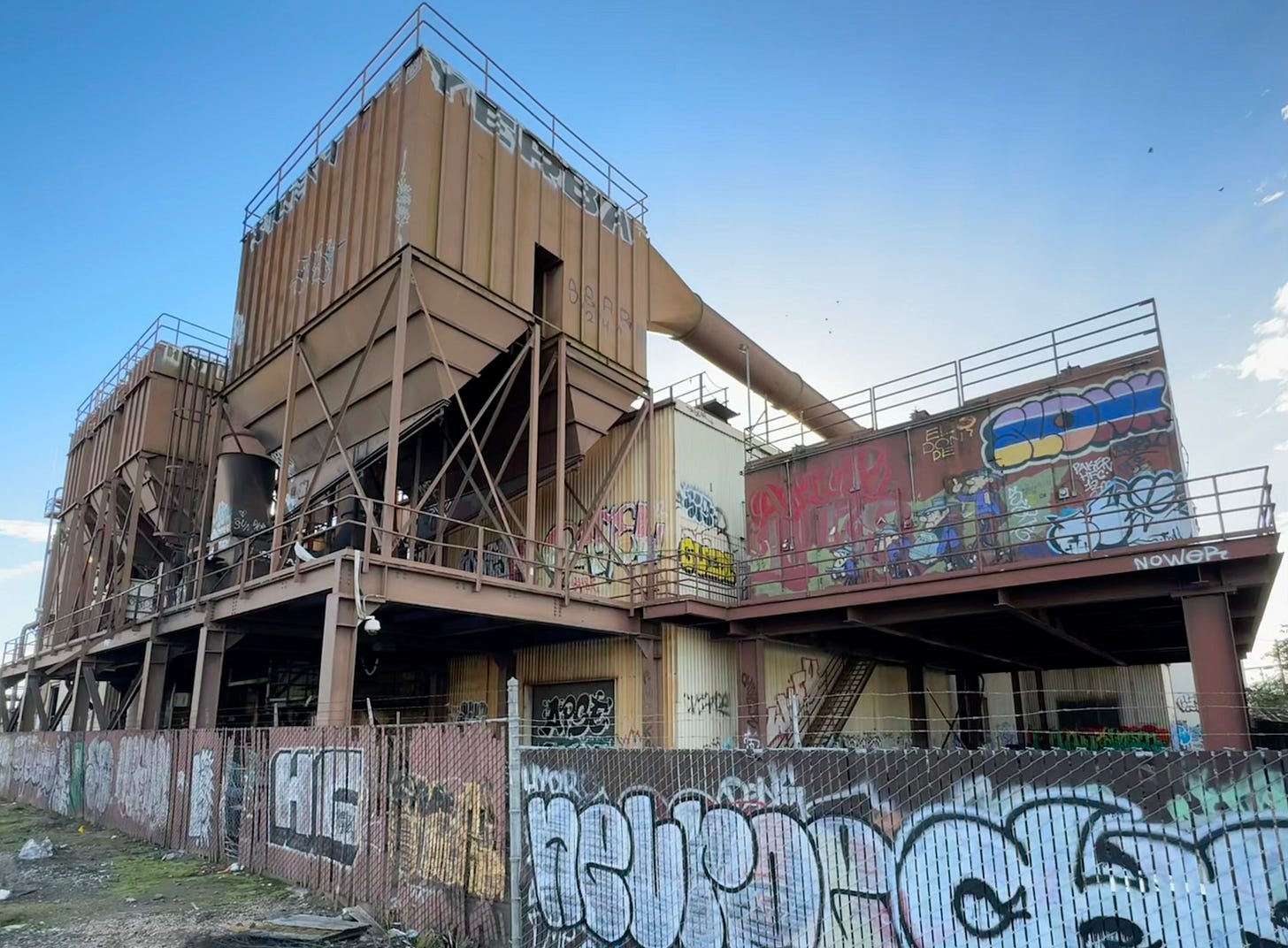
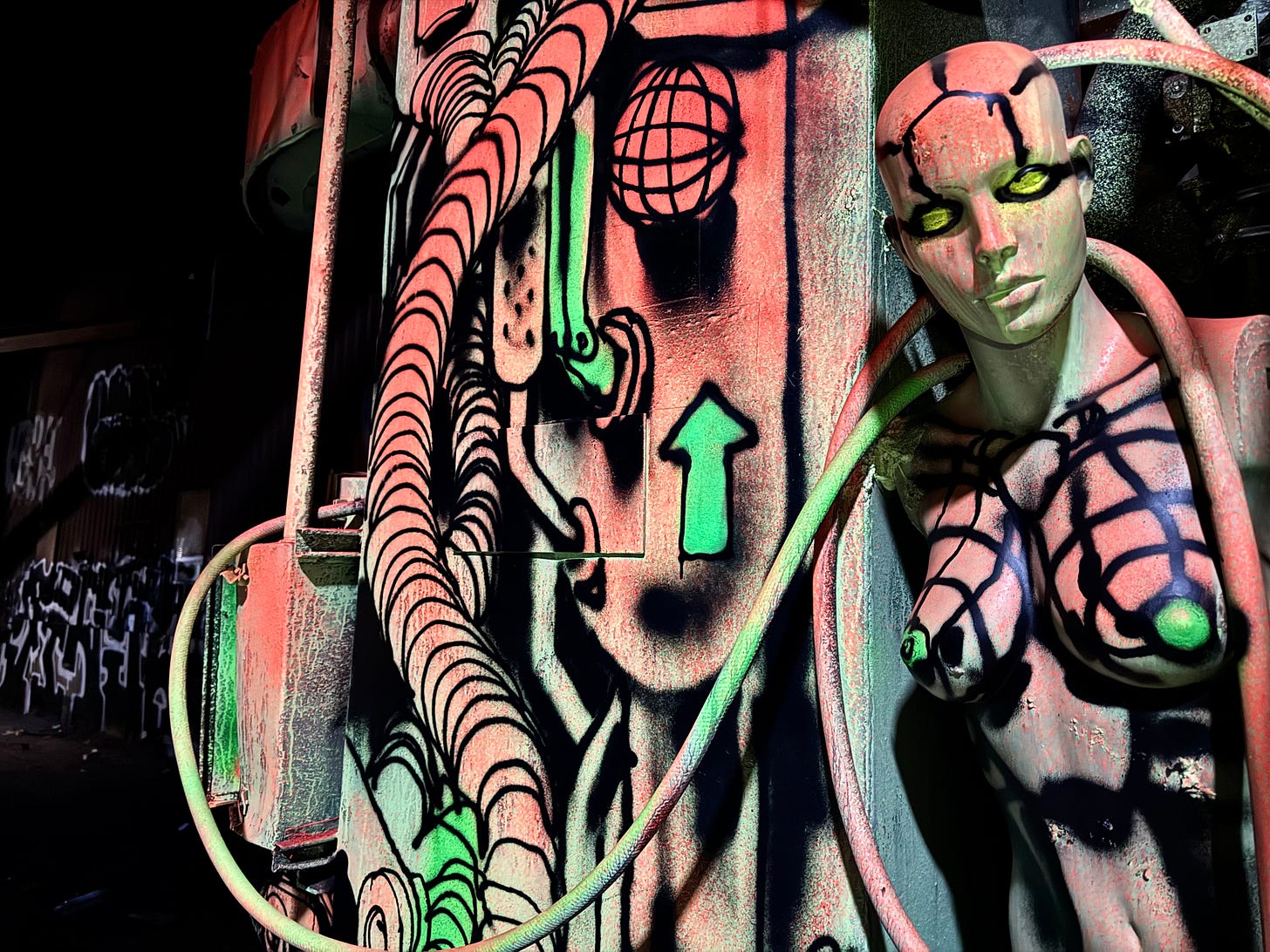
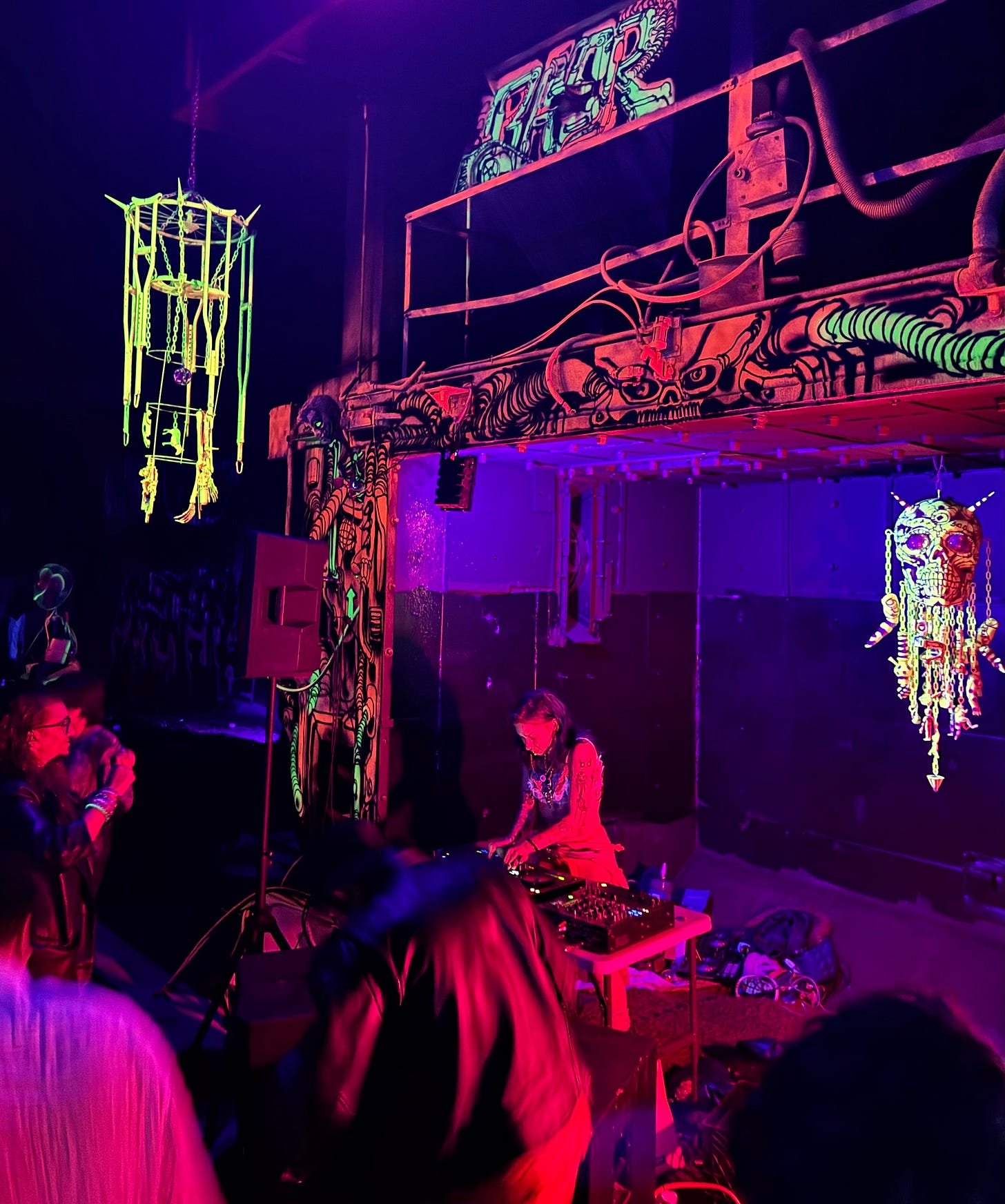
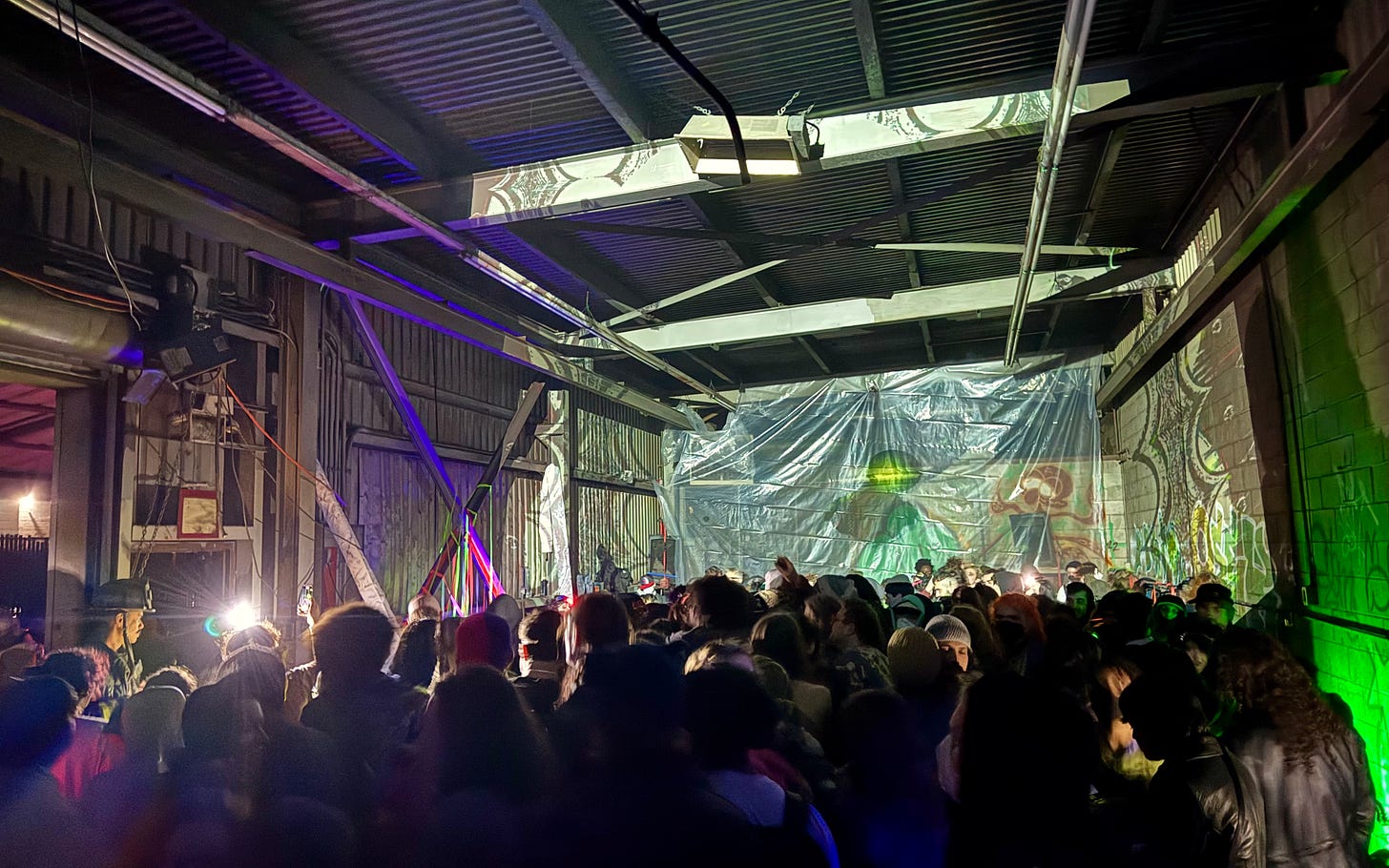
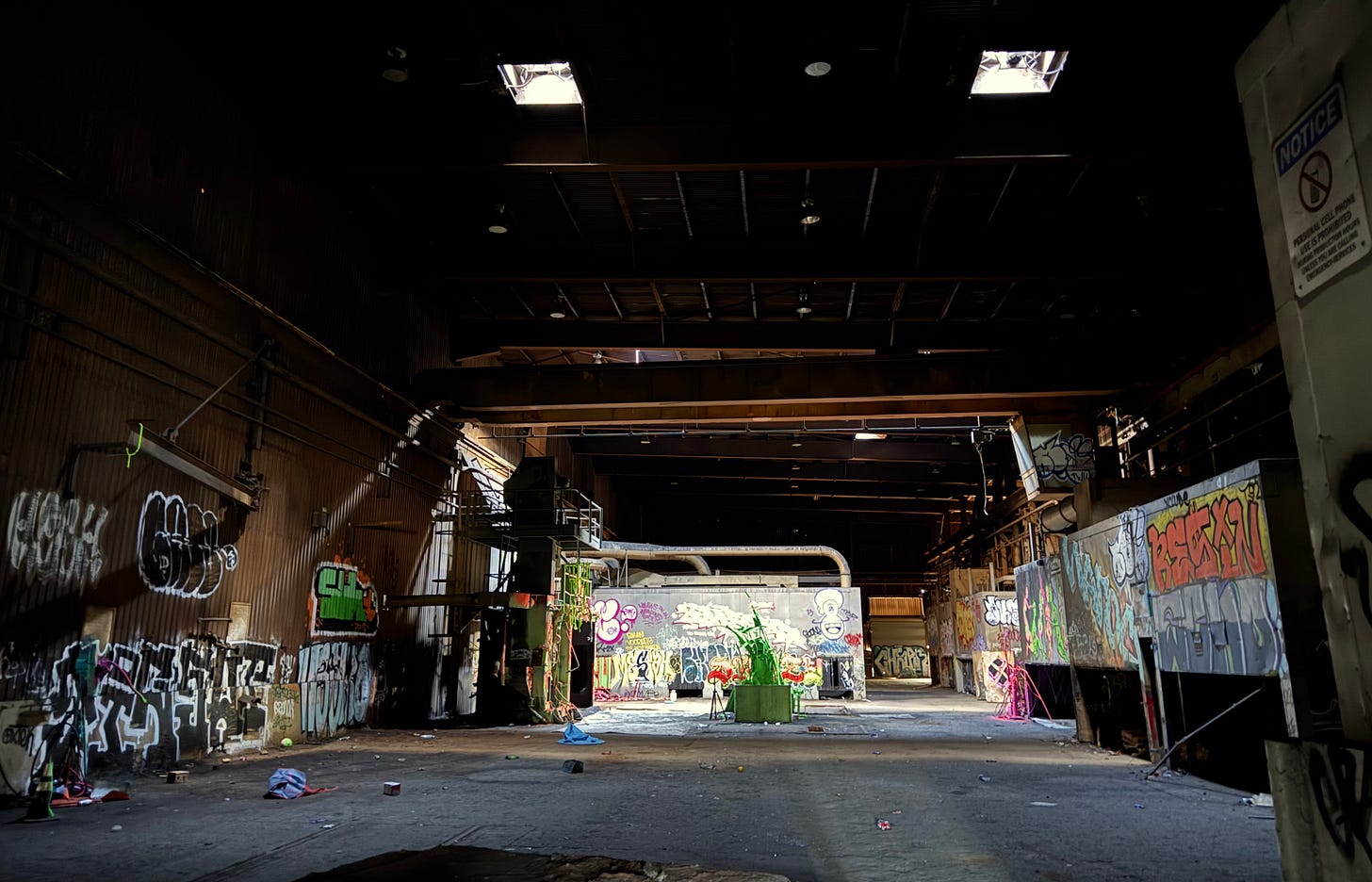
really good writing. the way you brought it all home with this line! "When I finally made it back home, I looked out my window and saw that the first sunrise of 2025 was glowing bright orange, like someone had splashed molten steel across the horizon."
Wonderful post, Liam!